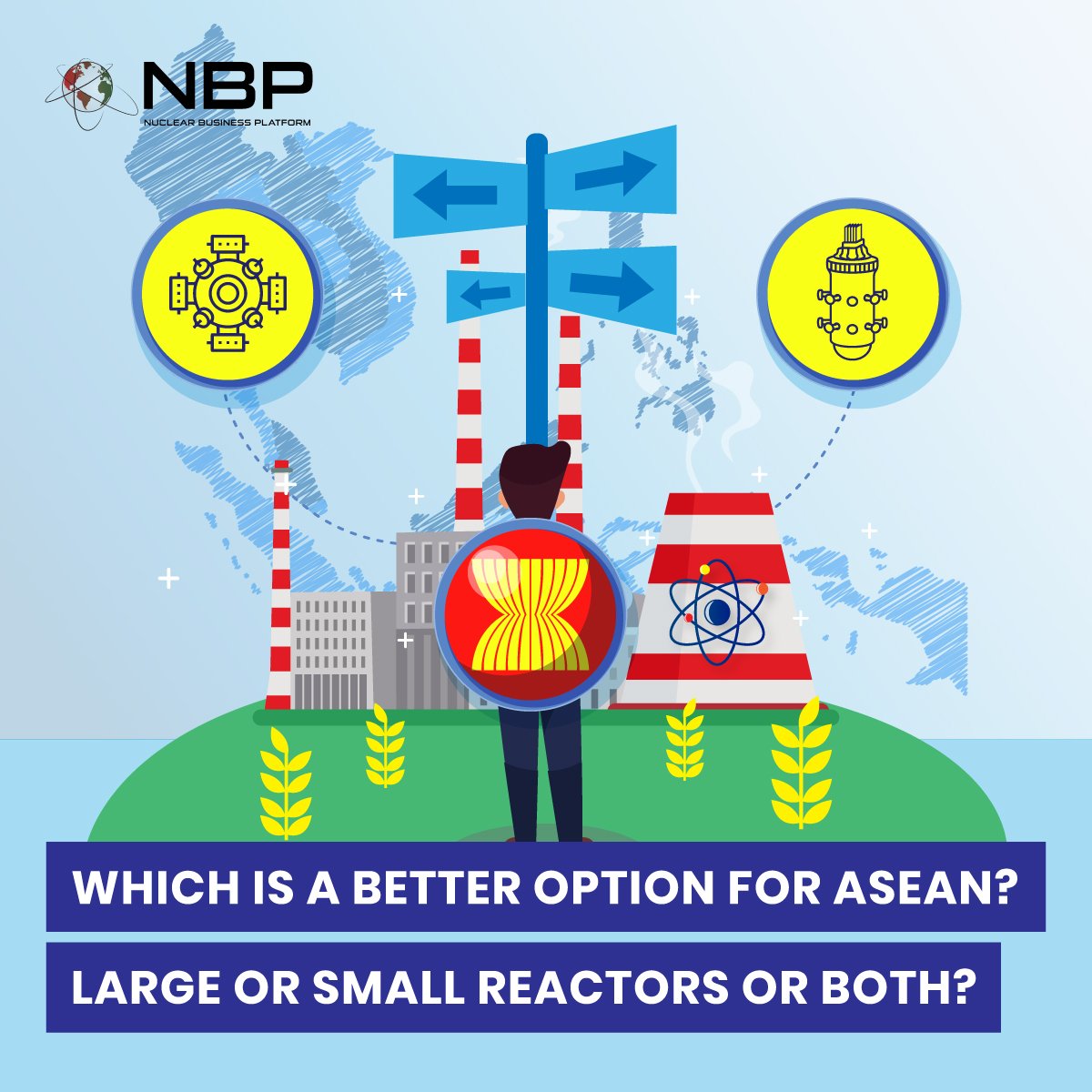Which is a better option for ASEAN? Large or Small reactors or both?
Overview of ASEAN Energy Landscape
The Southeast Asia region, commonly referred to as ASEAN, consists of 11 countries. According to ASEAN's Secretary General, Kao Kim Hourn, ASEAN is poised to become the world's fourth-largest economy by 2030. This projection is based on the fact that its combined gross domestic product (GDP) already stands at approximately $3.7 trillion, and its population exceeds 670 million people. This remarkable economic growth has established ASEAN as the third-largest economy in Asia and the fifth-largest globally. The region's ambitious trajectory places it on track to secure the fourth spot in the global economic ranking by 2030.
Over the past 15 years, the energy demand within this region has surged by an astonishing 60%, as reported by the International Energy Agency (IEA). This surge has primarily been met through the importation of fossil fuels, which now account for over 90% of the increased energy consumption. However, this heavy reliance on non-renewable energy sources has raised concerns about energy supply security and environmental management. Southeast Asia now faces the challenge of reconciling its growing energy demands with these crucial considerations.
Governments across Southeast Asia have recognized the need for a more sustainable and secure energy future. To this end, several countries in the region have committed to ambitious long-term plans. These countries are proactively working to reduce their greenhouse gas (GHG) emissions and transition to decarbonized economies. They have set mid-term and long-term objectives aimed at reducing their GHG emissions by at least 20%, a vital step in their journey toward achieving carbon neutrality in the future.
The ASEAN member states (AMS) are actively diversifying their energy mix, a strategic move designed to reduce their over-dependence on fossil fuels. Furthermore, they are exploring alternative energy sources, including nuclear energy, to enhance the security, affordability, and environmental sustainability of their energy supplies. This concerted effort is indicative of the region's commitment to addressing its energy challenges while simultaneously contributing to global efforts to combat climate change.
Nuclear Energy Development in ASEAN
Indonesia and the Philippines are currently the ASEAN member states that are actively exploring the nuclear energy option. But it might be possible for a country like Malaysia and Vietnam to revisit nuclear energy into their energy mix , as they have robust nuclear energy programs. And additional other AMS might want to explore nuclear energy in the future.
Indonesia and the Philippines have recently embarked on ambitious programs to establish nuclear power. Both countries have successfully completed Phase 1 of the Integrated Nuclear Infrastructure Review (INIR) assessment in 2009 and 2018 respectively. Indonesia is prepared for Phase 2 in 16 out of 19 nuclear infrastructure elements, with measures to address the remaining aspects underway, while the Philippines is working to overcome nine challenges identified by the 2018 INIR assessment.
Indonesia in its Energy Sector Roadmap Towards Net Zero Emission 2060, plans to develop a nuclear power plant by 2039. In parallel, the Philippines is bolstering its nuclear program in response to escalating energy needs, expensive electricity, and a heavy reliance on coal imports. The Philippine Department of Energy (DOE) proposes a strategic energy plan envisioning the establishment with 1,200 megawatts (MW) of capacity planned by 2032, 2,400 MW by 2035, and 4,800 MW by 2050.
Large Reactor and Small Modular Reactor
Nuclear power is seen by many countries in Southeast Asia as a potential way to meet rising electricity demand and reduce dependence on fossil fuels. Nuclear energy has been considered an attractive option for meeting the growing energy demand in ASEAN due to its low greenhouse gas emissions and ability to provide baseload power.
When selecting the most suitable nuclear power plant (NPP) type for ASEAN, several key factors come into play. Energy demand, land availability and economic resources vary significantly across the region, prompting high-demand countries like Indonesia, Philippines, Malaysia, Vietnam and Thailand to consider large reactors for increased electricity production, while smaller nations like Singapore or Laos may find Small Modular Reactors (SMRs) more fitting due to their incremental deployability. Grid infrastructure and connectivity are critical, with established grids favouring large reactors and regions with limited connectivity leaning toward SMRs. Finally, the availability of human resource with relevant skills can influence the choice, with countries possessing an existing nuclear infrastructure, such as Malaysia, Indonesia, Vietnam and the Philippines, tending to favour large reactors due to the availability of expertise.
Large nuclear reactors, with over 50 years of proven technology, scale, and efficiency, have been the preferred choice for many nations globally, while SMRs are gaining prominence due to their smaller size, lower upfront capital costs, and modular construction, potentially offering numerous advantages for ASEAN, although most are still in the demonstration stage.
While the emergence of Small Modular Reactors (SMRs) is indeed promising and intriguing for numerous regions worldwide, it is imperative for ASEAN nations to thoughtfully assess their distinct energy requirements, infrastructure, and economic landscapes. In my perspective, considering the established technology, economies of scale, and reliability, large nuclear reactors appear to be the optimal choice for countries such as Indonesia, the Philippines, Malaysia, Vietnam, and Thailand. Nonetheless, it's also crucial to closely monitor the development of SMR technology, as it may offer more flexibility and innovative solutions in the future. The right choice will depend on each nation's specific circumstances, and a nuanced approach that incorporates both large reactors and SMRs may be the most prudent strategy for achieving energy security and sustainability in the ASEAN region.



